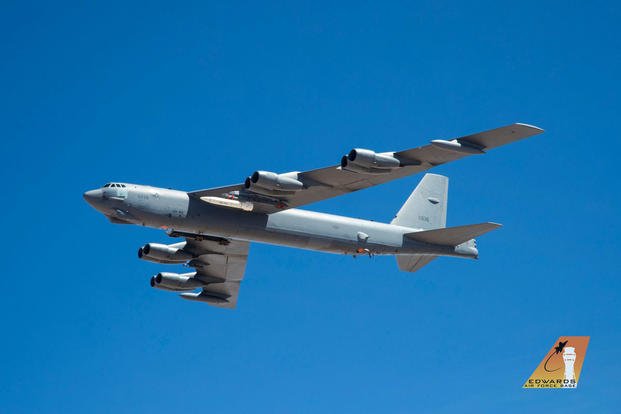SALON DU BOURGET, PARIS -- The U.S. Air Force just flew its first test flight of the AGM-183A Air Launched Rapid Response Weapon, a hypersonic weapon Lockheed Martin Corps. says it will continue to ground and flight test over the next three years.
The weapon, known as ARRW (pronounced "Arrow"), flew on a B-52 Stratofortress bomber aircraft on June 12 at Edwards Air Force Base, California. The tests were aimed to gather data on "drag and vibration impact" to the weapon as well as the performance of the carriage bay on the aircraft, the service said. The Air Force released photos of the flight via Twitter on Tuesday.
As part of a rapid prototyping scheme, the Air Force has been working with Lockheed, the prime contractor, to develop the hypersonic tech that would move five times the speed of sound as the Pentagon races to win the global race for new hypersonic technologies.
Lockheed officials touted the Air Force's first flight here at the Paris air show.
Related:
-
Air Force Doubles Down on Hypersonic Weapons Development with 2nd Contract
-
Turkey Unveils its Own TF-X Next-Gen Fighter Amid F-35 Uncertainty
- Paris Air Show 2019
"This captive-carry flight is the most recent step in the U.S. Air Force's rapid prototyping effort to mature the hypersonic weapon, AGM-183A, which successfully completed a preliminary design review in March," Lockheed officials said in a release. "More ground and flight testing will follow over the next three years."
Joe Monaghen, spokesman for Lockheed's tactical and strike missiles and advanced programs, told Military.com that the first test of ARRW represented a milestone that paved the way for future flights and continued integration.
While the Defense Department is pursuing multiple avenues for hypersonic technologies, the variety will give the Pentagon better selection "to determine what works best operationally, across the different branches and mission sets," Monaghen said.
Boeing Co., manufacturer of the B-52, said the recent test shows that the Cold War-era bomber can operate for years to come despite its age.
"This recent success put the [Air Force] well on its way to the live-launch testing of an extraordinary weapon soon," said Scot Oathout, director of bomber programs at Boeing, in a statement. "The future B-52, upgraded with game-changing global strike capability, such as ARRW, and crucial modernizations like a new radar and new engines, is an essential part of the [Air Force's] Bomber Vector vision through at least 2050."
The Air Force awarded a second contract to Lockheed in August 2018 -- not to exceed $480 million -- to begin designing a second hypersonic prototype of ARRW. The Air Force first awarded Lockheed a contract last April to develop a separate prototype hypersonic cruise missile, the Hypersonic Conventional Strike Weapon (HCSW).
-- Oriana Pawlyk can be reached at oriana.pawlyk@military.com. Follow her on Twitter at @oriana0214.
Related:












